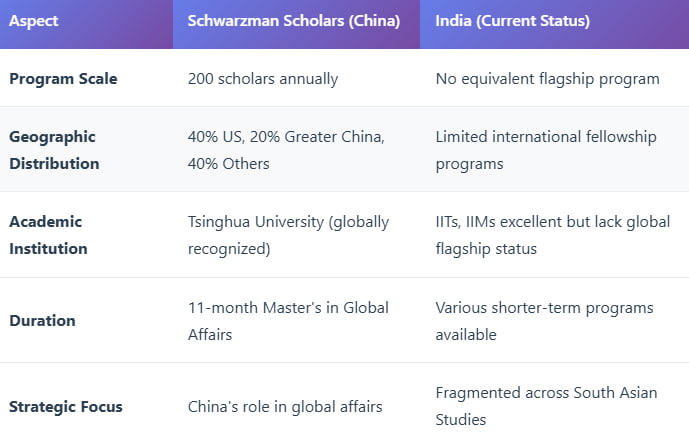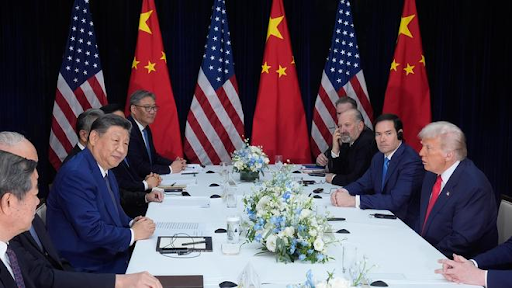



India’s marginal presence in American intellectual circles, unlike China’s Schwarzman Scholars, stems from outdated narratives and limited academic investment. A flagship fellowship, backed by a globally recognized Indian institution, could reshape perceptions, fostering leaders who understand India’s complexity, enhancing its strategic narrative in a multipolar world.

Copyright infringement not intended
Picture Courtesy: THE HINDU
India is a major economy, a nuclear power, and the world's largest democracy, however, it does not occupy a space in the American elite consciousness proportional to its size.
Historical "Scratches" => The American image of India was shaped by British colonial narratives, which depicted it as spiritual, chaotic, and remote. China was seen as revolutionary, significant, and a major player (ally or adversary).
Cold War Divergence => China was a central focus for the U.S., first as a communist rival and later as a capitalist partner. India's Non-Aligned Movement (NAM) policy, while strategically sound for its interests, made it difficult for the U.S. to place it within its bipolar strategic framework.
China => Masterfully projected a convincing narrative of transformation and opportunity, which the West was ready to embrace. It invested heavily in soft power tools like Confucius Institutes and programs like Schwarzman.
|
'Schwarzman Scholars' Programme: A Case Study A fully funded, one-year Master's program in Global Affairs at Tsinghua University in Beijing, one of China's most prestigious universities. To create a global network of future leaders who understand China's role in the world. How does it work? => It engages promising international students in China, providing academic learning, cultural experiences, and networking opportunities. This is a planned strategy to shape global perception and build connections. |
India => Focused inward on sovereignty and self-reliance. Its soft power projection has been more modest, irregular, and less state-driven, often limited to cultural exports like yoga and cuisine rather than strategic intellectual engagement.
 Consequences for India
Consequences for India
It leads to outdated thinking in foreign policy circles, such as the continuous "India-Pakistan" hyphenation, which fails to recognize India's independent geopolitical weight.
A stronger, more accurate narrative can promote greater investor confidence and create a more favorable environment for business and technological partnerships.
Continuously being misrepresented or viewed through a distorted lens is an ethical challenge to a nation's identity and global standing.
India needs to establish a globally recognized fellowship program, a "brand" that combines academic excellence, policy connection, and philanthropic backing.
The story of India must evolve beyond yoga, spirituality, and food. It needs to confidently project its successes in areas like the digital economy (UPI), space exploration (Chandrayaan), and its unique model of a pluralistic, vibrant democracy.
Creating such large-scale intellectual infrastructure cannot be the government's job alone. It requires a synergy between government will, the dynamism of private capital, and the vision of the academic community.
For India to transition from a "balancing power" to a "leading power," its strategic and economic growth must be complemented by a growth in its intellectual and cultural influence.
Must Read Articles:
India, U.S. Tariffs & Trade Talks
India-US Relation Under Trump 2.0
Source:
|
PRACTICE QUESTION Q. "Soft power involves shaping the preferences of others through appeal and attraction." How can India enhance its soft power in the post-pandemic world order? 150 words |




© 2026 iasgyan. All right reserved